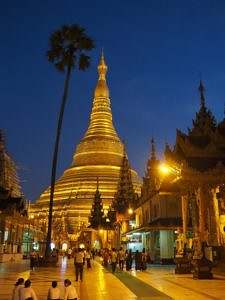Traditions, Language, and Heritage of Myanmar Culture
Myanmar, also known as Burma, is a Southeast Asian nation known for its diverse cultures, rich history, and breathtaking landscapes. For centuries, Myanmar has been a melting pot of ethnic groups, religions, and traditions. Understanding Myanmar’s culture is essential to gaining insight into the broader cultural mosaic of Asia. This cornerstone blog will delve into the various aspects of Myanmar’s culture, from its language and traditions to its religious practices, festivals, and famous figures.

1. A Land of Diversity: Ethnic Groups and Languages
Myanmar is home to over 135 distinct ethnic groups, with the Bamar (Burman) being the largest, comprising about two-thirds of the population. Other major groups include the Shan, Karen, Kachin, Chin, Mon, and Rakhine, each with its own unique customs, dialects, and traditions.
Languages Spoken in Myanmar: The official language of Myanmar is Burmese, spoken by the majority of the population. However, with so many ethnic groups, various regional languages and dialects are also spoken throughout the country. Common regional languages include Shan, Karen, and Chin, among others. Understanding the diversity of languages in Myanmar is key to appreciating its rich cultural fabric.
- Burmese: The official and most widely spoken language.
- Shan, Karen, and Kachin: Prominent among ethnic minority groups.
2. Religious Practices: Buddhism and Beyond
Religion plays a crucial role in shaping Myanmar’s identity. The vast majority of Myanmar’s population practices Theravada Buddhism, which influences the daily lives, social structures, and festivals of the people. Buddhist monasteries serve as not just places of worship but also as educational centers and communal gathering spots.
Key Religious Practices:
- Meditation and Monastic Life: Many Myanmar citizens become monks, even for short periods, to practice meditation and gain merit.
- Pagodas and Temples: From the majestic Shwedagon Pagoda in Yangon to the ancient temples of Bagan, religious architecture is central to Myanmar’s cultural landscape.
- Nat Worship: While Buddhism dominates, many Burmese also believe in Nats, or spirits, which are venerated in both urban and rural areas.
3. Festivals and Traditions: A Vibrant Cultural Calendar
Myanmar’s festivals are colorful, spiritual, and deeply rooted in tradition. The biggest and most important festival in Myanmar is Thingyan, the water festival marking the Burmese New Year. It’s celebrated with water fights, cleansing rituals, and visits to pagodas, reflecting the nation’s Buddhist ethos of purification and renewal.
Key Festivals:
- Thingyan (Water Festival): Held in April, it marks the Burmese New Year with water celebrations, symbolizing the washing away of sins.
- Thadingyut (Festival of Lights): Celebrated at the end of the Buddhist Lent in October, homes and pagodas are adorned with lights to honor the Buddha’s descent from heaven.
- Tazaungdaing: A festival of offerings and almsgiving held in November, showcasing Myanmar’s spirit of generosity and community.
4. Traditional Dress and Cuisine: Symbols of Myanmar’s Heritage
Traditional Dress:
The traditional attire of Myanmar is called the longyi—a wrap-around skirt worn by both men and women. Men wear a version called paso, while women wear the htamein. Both are often made of colorful, intricate fabrics that vary by region and ethnic group.
Cuisine:
Myanmar’s cuisine reflects its cultural diversity, blending flavors from India, China, and Thailand. Staple foods include rice, fish, and vegetables, often flavored with a balance of sour, salty, spicy, and bitter tastes.
What is Burmese food? Some iconic dishes include:
- Mohinga: A rice noodle soup with fish broth, often considered Myanmar’s national dish.
- Lahpet Thoke: A tea leaf salad that is both unique and symbolic of Myanmar’s social customs.
- Shan Noodles: A savory dish made with rice noodles, chicken, and aromatic spices.
5. Art and Architecture: Reflections of Myanmar’s Soul
Myanmar’s art and architecture are deeply influenced by its religious traditions, particularly Buddhism. The intricate carvings on pagodas, stupas, and monasteries reflect centuries-old craftsmanship.
Architectural Highlights:
- Bagan: Home to over 2,000 ancient temples and pagodas, this UNESCO World Heritage site is a symbol of Myanmar’s rich cultural heritage.
- Inle Lake Villages: Known for their stilt houses, these villages offer a glimpse into the traditional ways of life for the ethnic Intha people.
- Colonial Influence: Myanmar’s urban areas, especially Yangon, are dotted with British colonial architecture, a remnant of its colonial past.
Traditional Arts:
- Burmese Lacquerware: An ancient art form where artisans create beautiful bowls, trays, and boxes.
- Sand Painting: This unique form of art, created on fabric, is a popular souvenir for visitors to Bagan.
- Puppetry and Dance: Traditional Myanmar puppetry and dance performances narrate stories from history and mythology.
6. Famous Figures from Myanmar
Myanmar has produced many significant figures in politics, art, and spirituality. Among the most prominent is Aung San Suu Kyi, a Nobel Peace Prize laureate known for her role in advocating for democracy and human rights in the country.
Other notable figures include:
- Thakin Kodaw Hmaing: A poet, writer, and political leader known for his literary contributions.
- Zaw Win Htut: A renowned Burmese rock singer who brought Western musical influences into the Myanmar music scene.
7. Myanmar Today: Tradition in a Changing World
While Myanmar has undergone significant political and social changes in recent years, its cultural heritage remains a cornerstone of national identity. The country is slowly opening up to global influences, but its ancient traditions, languages, and customs continue to thrive, ensuring that Myanmar remains one of Asia’s most unique cultural destinations.
As Myanmar continues to evolve, it will be fascinating to observe how its cultural tapestry weaves the old with the new, creating a future deeply rooted in its storied past.
Myanmar’s culture is a rich blend of diverse ethnic traditions, religious beliefs, and centuries-old customs. From its colorful festivals and traditional dress to its profound religious practices and artistic heritage, Myanmar offers a window into the deep and vibrant cultural life of Southeast Asia. Understanding Myanmar culture provides essential insight into the broader region of Asia, helping to connect people to the values and traditions that shape this unique nation.
